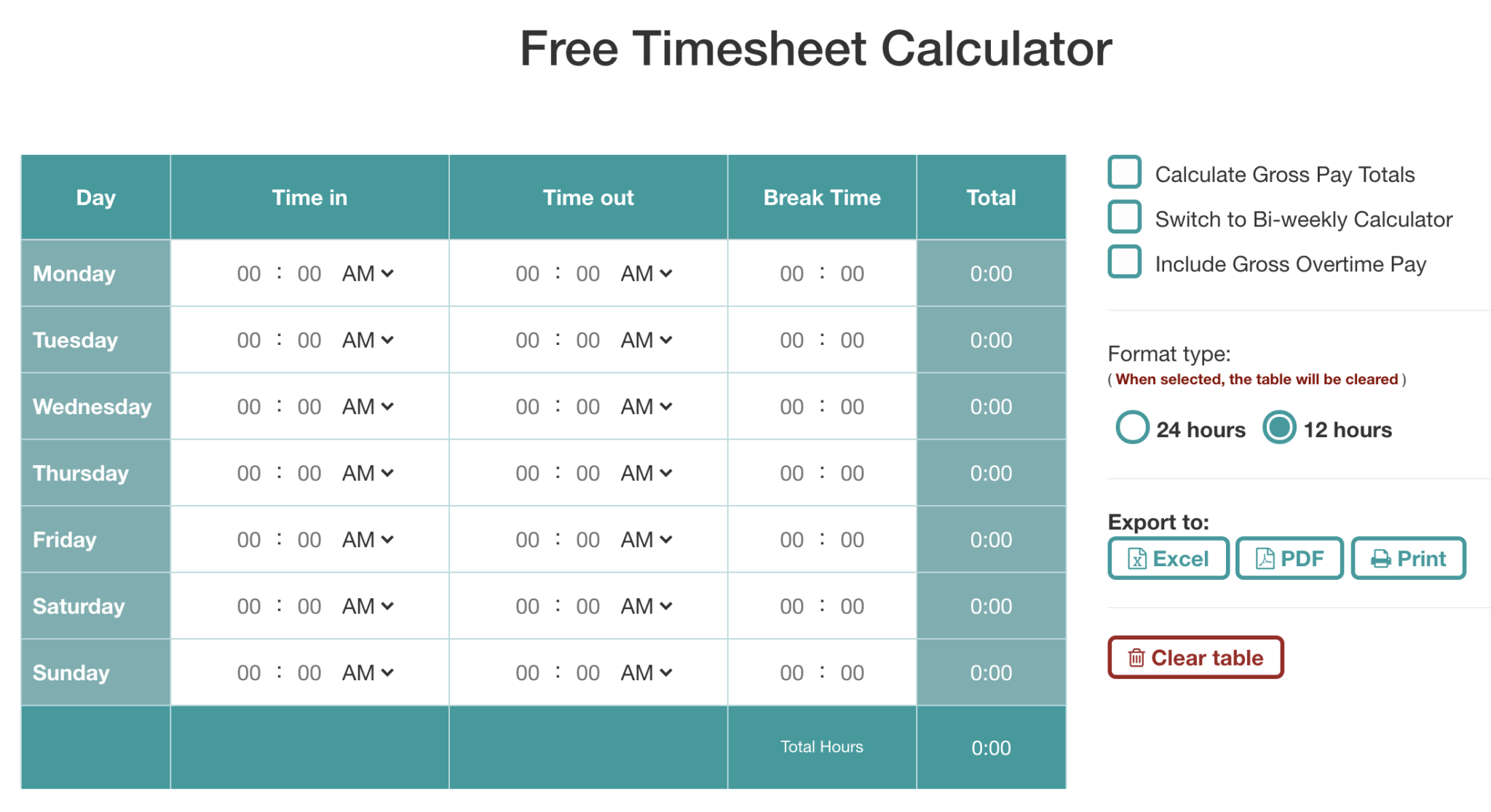

You must approve the time registrations that were calculated correctly – this means doing a calculation without errors – before pay items can be generated that afterward can be transferred to a payroll system. Typically the group will be specific to a team, shift, or work group.
WORK CLOCK IN AND OUT CALCULATOR REGISTRATION
Just as you assign a calculation group to a time registration worker, you must assign an approval group as well. It must be added before the calculation can be completed. The calculation will also display an error if an absence registration is missing. If the worker profile is day shift, and the worker has agreed to work a night shift with no overtime pay, the team manager or supervisor must override the default worker profile in order to calculate the working time at the standard night rate and not as overtime. For example, create clock-out registrations and create absence transactions.īecause the registered time must match the worker's time profile prior to calculating the registrations, you must override the work time profile for any worker who has an exception to their standard work time profile. For example, change switch codes and adjust feedback on production jobs. As part of the calculation process the team manager or supervisor is able to: The team manager or supervisor typically validates the registrations made by the workers, and is therefore also the responsible person to run the calculation for the respective calculation groups on a daily basis. When a registration worker is assigned a calculation group that typically relates to a specific team, shift, or work group. Both the clock-in and clock-out registrations are vital for the subsequent calculation and approval of time registrations before they can be transferred to payroll.

The system will compare the clock-in time and the clock-out time according to the associated profile of the worker, and automatically insert the missing clock-out registration to match the profile's end time. If a worker forgets to clock-out at the end of their workday, the missing registration can be added by running a batch job. Overtime, which can be registered either as extra hours, flextime, or overtime. Examples of these activities include meetings or cleaning their workspace. Indirect activities, which are non-productive activities a worker might engage in during a workday. Work breaks, either manually registered or automatically calculated by the system. Registering project fees and item consumption via the respective project fee journals and project item journals.Ībsence when arriving late to work or leaving earlier than planned. Time registrations on projects and project activities.

Workers, who are required to register time and attendance at regular intervals, for example daily, weekly or bi-weekly.The intended users of time and attendance are: In other companies, workers may also be required to register time consumption on the actual activities they perform and the breaks they take. Some companies may only require workers to register clocking-in and clocking-out times. In companies that use time and attendance, workers must register the time that they spend at work in addition to their attendance. This article describes registrations, their calculation, approval, and the use of workflow to add structure and automated approval to the process of approving timesheets. Time registration workers can enter different types of time registrations, for example, clock in, clock out, register indirect activities, and absence registration.


 0 kommentar(er)
0 kommentar(er)
